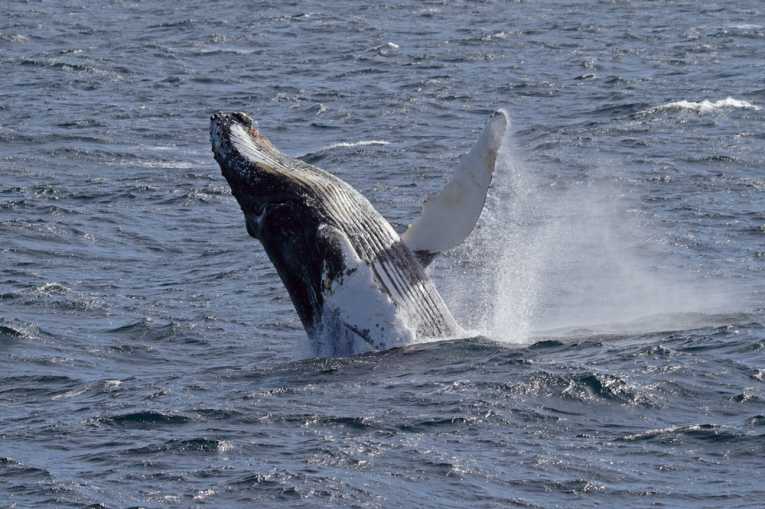Humpback whales in the Indian Ocean look like they have the X-Factor when it comes to singing. Humpbacks at opposite ends of the Southern Indian Ocean are singing different songs, a Wildlife Conservation Society Study (WCS) has revealed for the first time; normally, whales in the same area of the ocean sing songs with similar themes.
Lead author, Anita Murray, says, "In the Northern Hemisphere, within an ocean basin, whales sing songs that are composed of the same themes. However, the humpback whales in the southern Indian Ocean are singing almost completely different songs.
"Songs from Madagascar and Western Australia only shared one similar theme, the rest of the themes were completely different.
"The reason for this anomaly remains a mystery. It could be the influence of singing whales from other ocean basins, such as the South Pacific or Atlantic, indicating an exchange of individuals between oceans which is unique to the Southern Hemisphere."
The study, involving researchers from WCS, Australia and Columbia University, USA, suggests there could be a limited exchange between humpback whales in the two regions and may explain how whale culture develops.
The songs that can last half an hour contain complex parts or themes made up of high and low wails, shrieks and moaning sounds. The males are usually responsible and sing at winter breeding areas, summer feeding spots and migratory routes.
It seems likely that individual humpback whales transmit songs at feeding areas or when migration occurs, as that is when various populations mix. Another possibility is that male 'troubadours' visit breeding grounds between seasons.
The researchers recorded 19 humpback whale singing off the Madagascar coast and in Western Australia in the 2006 breeding season using underwater microphones. In all, they recorded more than 20 hours of singing.
Analysis showed that the songs were mostly very different. Of 11 themes recorded, only one was shared by both communities.
As only one breeding season was recorded, the team is keen to see the study repeated.

Humpback whale via Shutterstock
Director of WCS's Ocean Giants Program, Dr. Howard Rosenbaum, says, "These song comparisons complement our findings based on other methods, such as those from genetic analysis, to understand how whale populations interact with one another."
Salvatore Cerchio, a WCS conservationist, adds, "We have glimpsed here a snapshot of differences in repertoire between humpback whale population of the Indian Ocean during a single season. Continued monitoring of these songs can provide us with valuable information on how whale songs are exchanged and how those channels of cultural transmission can be protected in the future."
Anita Murray carried out the research as a graduate student at Columbia University and the Wildlife Conservation Society and is currently studying for doctorate at the University of Queensland, Australia.
Other authors of the study include Salvatore Cerchio, Yvette Razafindrakoto and Howard Rosenbaum from the Wildlife Conservation Society; Robert McCauley, of Curtin University, Perth, Australia; Curt S. Jenner of the Centre for Whale Research, Fremantle, Australia; Douglas Coughran of the Department of Environment and Conservation, Perth; and Shannon McKay of the School of Life and Environmental Science, Warrnambool, Australia.
The study is published in the January edition of Marine Mammal Science and can be seen on its website.
WCS, which aims to save wildlife and wild places worldwide, began studying humpback whales in the 1960s. Over the last 10 years, its Ocean Giants Program has carried out extensive molecular analysis of humpback whale populations in the southern Atlantic and Indian oceans to find out more about discrete populations.
The humpback whale is a baleen whale that reaches around 50 feet (15 metres) in length. It has long pectoral fins and a head with knobs on the top and lower jaw. Until 1966, when it was protected by the International Whaling Commission, it was hunted commercially. It is not known exactly how many exist in the wild.










